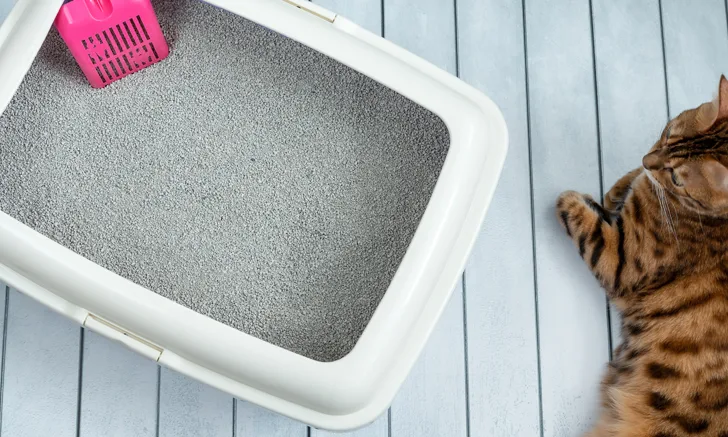Aelurostrongylosis in Cats
Donato Traversa, DVM, PhD, DipEVPC, EBVS, University of Teramo, Teramo, Italy

In the Literature
Abbate JM, Arfuso F, Gaglio G, et al. Larval survival of Aelurostrongylus abstrusus lungworm in cat litters. J Feline Med Surg. 2018:1098612X18811168.
The Research …
Cats infected with the respiratory nematode Aelurostrongylus abstrusus shed first-stage larvae (L1s) in their feces. The gold standard for detecting L1s is the Baermann fecal test.1 Although this test is easy to perform and requires simple equipment, false-negative results may occur due to the prepatency period or intermittent/low larval shedding, and skillful microscopists are necessary for L1 identification.1 Further, the Baermann test detects alive and motile L1s; thus, any factor potentially impacting larval vitality and viability may limit its sensitivity.
Appropriate sampling is crucial for a reliable diagnosis of aelurostrongylosis. Free-living nematodes may confound the diagnosis if the feces are collected from soil (eg, for free-roaming cats); thus, stool samples should be taken from a litter box.
This study evaluated the effects of commercial litters on the survival of A abstrusus L1s in a one-day period (ie, the typical cleaning interval). Clumping and nonclumping clays, silica crystals, and biodegradable litters were examined under laboratory conditions for their impact on larval survival at regular intervals (ie, ≤24 hours). Results indicated that certain factors (eg, litter type, feces–litter contact time) may limit diagnostic efficiency of the Baermann method.
For all litter types used, survival of A abstrusus L1s decreased by approximately 80% after 3 hours and by approximately 100% after 24 hours. This time-dependent decrease was attributed to progressive, litter-induced larval dehydration. The authors note, however, that the laboratory conditions may not reflect what occurs in the natural setting of a cat’s home. Presence of urine, fecal consistency, and stool not buried in litter may unpredictably prolong larval survival in domestic settings. Another important factor influencing larval vitality is variations in temperature. The study was performed at 68°F to 73.4°F (20°C-23°C; ie, typical indoor home temperatures), although samples exposed to colder (eg, cat litter left on balconies, on terraces, in cupboards, in houses without heat or in which heat is turned off) or warmer temperatures (eg, litter left outdoors, in houses without air conditioning or in which air conditioning is turned off) may still be used for a Baermann test. It should be noted that the longer feces are in litter, the higher the likelihood L1s will die, which may result in false-negative Baermann results.

FIGURE 1
First stage larvae of Aelurostrongylus abstrusus
… The Takeaways
Key pearls to put into practice:
The importance of frequent fecal examinations, particularly for cats allowed outdoors, should be recognized.
All cats with respiratory signs should have more than one fresh fecal sample emitted on consecutive days examined with the Baermann method.
When collecting a fecal sample, owners should be advised to avoid collecting feces deposited hours earlier, to clean litter material from the sample, and to bring the sample to the practice as soon as possible.
You are reading 2-Minute Takeaways, a research summary resource presented by Clinician’s Brief. Clinician’s Brief does not conduct primary research.